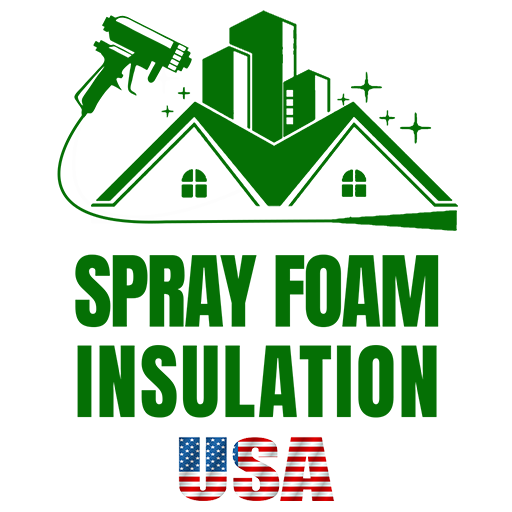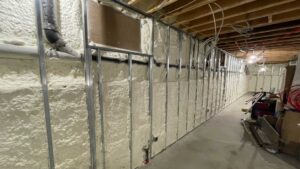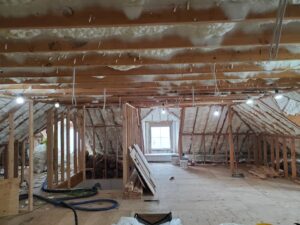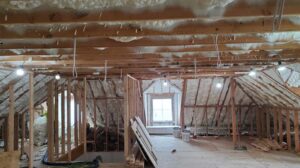Commercial insulation isn’t just a fancy term, it’s a must-have layer in buildings that means business in keeping energy costs down and comfort levels up. Think of it like a super suit for your building, blocking out the cold or the heat, depending on what the weather is up to. Different types come in to play for different jobs: fiberglass, cellulose, foam board, spray foam – you name it. The right fit for a place depends on what’s needed – soundproofing, fire resistance, or maybe controlling the sweat on those pipes. It’s a game of mix and match with materials and benefits, where the goal is always to end up with a snug, energy-efficient space. Installing it means dealing with the building’s nooks and crannies, from walls and roofs to floors and beyond. Doing it right can save a stack of cash in the long run on heating and cooling, and let’s not forget it’s a solid move for the planet too.

The Importance of Insulation for Commercial Buildings
Insulation in commercial buildings isn’t just about staying warm in the winter or cool in the summertime. It’s a crucial player in reducing energy costs, improving the comfort of those working inside, and minimizing the strain on HVAC systems. A well-insulated building acts like a thermos, maintaining temperature effectively and cutting down on the need for heating and cooling. That means lower utility bills — a big win for any business keeping a keen eye on overheads. Additionally, insulation plays a role in soundproofing, keeping the hustle and bustle of the outside world from disrupting workflow. This isn’t just about comfort; it’s about creating an environment where productivity can thrive. But it’s not just about the immediate impact. Good insulation also contributes to the longevity of the building by preventing moisture build-up, which can lead to mold and structural damage. By investing in quality insulation, businesses are investing in their future.
Types of Insulation Materials Used in Commercial Properties
In the world of commercial insulation, options are plentiful. Let’s cut to the chase. You’ve got fiberglass, a classic that’s cost-effective and widely used – it comes in batts and rolls that fit between wall studs and ceiling joists. Rigid foam boards, another choice, deliver strong insulating power with a thinner profile, great for sheathing or layering under flooring. Now, spray foam, that’s the high performer with an air-sealing mojo. It expands to fill nooks and crannies, curbing energy loss. And don’t overlook mineral wool. It’s sturdy, sound absorbent, and doesn’t shy away from high temperatures. If you’re going green, consider cellulose. It’s recycled paper turned insulation, with a knack for keeping the cold at bay. Reflective insulation, also on the table, bounces back the sun’s rays, handy for roofs and sunny spaces. Whatever your building demands, there’s an insulation ready to step up. Each material has its strengths, so weigh ’em; consider factors like climate, fire resistance, and soundproofing. The right match ups your building’s efficiency game – and that’s a win for cost control and comfort. Choose wisely, insulate smartly.
Analyzing the Costs of Commercial Insulation
When you’re looking at insulating your commercial property, the bottom line matters. But don’t just look at the price tag—think long-term. Initial costs can vary, with materials like fiberglass, cellulose, and foam each coming with their own price points. Fiberglass tends to be on the more affordable end, while spray foam can hit your wallet harder initially.
Now, installation isn’t peanuts. Pros have to come in, do their thing, and that labor adds up. But don’t get stingy here. A job well done means fewer drafts, less energy seeping out, and lower bills down the line. It’s this energy efficiency that can have your investment paying you back. Plus, better insulation equals more comfort for the folks in the building, and that’s worth a few bucks.
Remember, each building’s got its own quirks. Size, location, the whole shebang, they all factor into your final cost. And while we’re at it, consider your insulation’s R-value—that’s its resistance to heat flow. Higher R-value, better insulation, but also a higher upfront cost. Crunch the numbers, think about the savings over time, and invest in the insulation that’ll serve your space best.
How to Choose the Right Insulation for Your Business Needs
When it comes to picking insulation for your business, think function first. Ask yourself, what’s the main goal? Is it to keep heat in, block noise, or reduce energy bills? There are different types of insulation – fiberglass, cellulose, foam, and radiant barriers, each with its own strengths. Fiberglass is common and cost-effective, good for general use. Cellulose is eco-friendly, made from recycled paper and is great for tight spaces. Foam comes in spray and rigid board form, tops for sealing leaks and gaps, but tends to cost more. Radiant barriers reflect heat, perfect for hot climates. Remember to check the R-value, which tells you how well the insulation resists heat flow. The higher the R-value, the better the insulation. But don’t just chase the highest number; consider the climate and the part of your building you’re insulating. Lastly, know your budget but don’t skimp. Efficient insulation saves money in the long run by cutting energy costs. So, weigh your options, think long-term, and you’ll nail the right choice for your business.
The Installation Process of Commercial Insulation
To install commercial insulation, first, the right type of insulation must be chosen. Factors like building codes, climate, and the facility’s specific needs dictate the selection. Once chosen, professionals carefully measure the space, since precise cuts are crucial for effective insulation. They prepare the area by cleaning it and addressing any moisture issues, to avoid mold and mildew growth later on. After prepping, the installation begins. Installers typically start from the top and work their way down, using special tools to secure insulation in walls, floors, and ceilings. Edges are sealed to prevent air leaks. Throughout the process, safety is paramount, both for the installers and the building’s future occupants. Proper installation ensures maximized energy efficiency, saving money on energy bills and contributing to a comfortable indoor environment.
Energy Efficiency and Savings with Proper Insulation
Insulating your commercial property isn’t just about staying warm or cool; it’s a smart investment. With proper insulation, you can significantly cut down on energy bills. It acts like a barrier, keeping heat inside during winter and out during the summer, maintaining a consistent temperature. A well-insulated building needs less energy to heat or cool, translating into savings. Think of it as a thermos for your building, maintaining the right temperature without constantly running your HVAC system.
What’s more, energy efficiency isn’t just about immediate savings. It also means you’re reducing your carbon footprint, contributing to a healthier environment. A business that cares for the planet attracts like-minded customers, adding a valuable edge to your reputation. Keep it simple, keep it insulated, and watch the energy bills drop. That’s efficiency that pays off.
Insulation Maintenance and Longevity in Commercial Buildings
Regular upkeep is key to making sure your commercial building’s insulation lasts. Good insulation reduces energy bills, keeps out noise, and controls temperature. But it doesn’t just take care of itself. To make it last, watch out for moisture; it’s the enemy. Damp insulation is less effective and can get moldy. Sometimes, pests like to nest in it which can ruin the material. Now, insulation doesn’t have a universal expiry date. The staying power varies by type. Fiberglass, for instance, can hold up for about 20 to 30 years, while foam insulation claims a lifespan of around 80 to 100 years. But these are just numbers. Actual life span depends on how well you maintain it. Routine checks and professional inspections are good practice. Tackle any problems quickly, and your insulation will keep doing its job for years to come.
Complying with Building Insulation Codes and Regulations
Staying within the law means knowing your local building codes and regulations when it comes to insulation. Every region has its rules to make sure buildings are energy efficient and safe. For example, the International Energy Conservation Code (IECC) sets the bar for many places, dictating how much and what kind of insulation you need. Local amendments can alter these requirements, so check with your city or county before starting your project. Non-compliance can lead to fines, delays, and having to redo the work. More importantly, proper insulation plays a huge part in reducing energy bills and environmental impact. Hence, getting it right from the get-go is essential for your bottom line and our planet’s future.
Conclusion: Maximizing the Benefits of Commercial Insulation
To wrap this up, getting the most out of commercial insulation boils down to a few key points. First, choose the right type for your building’s needs—whether it’s fiberglass, spray foam, or rigid board. Second, the thickness and placement should be spot on to ensure maximum efficiency. Third, professional installation makes a world of difference, both for safety and performance. Don’t forget, good insulation slashes energy bills, beefs up your building’s comfort, and is a solid move for the planet. Keep these tips in mind and you’re all set to reap the rewards of top-notch insulation.





